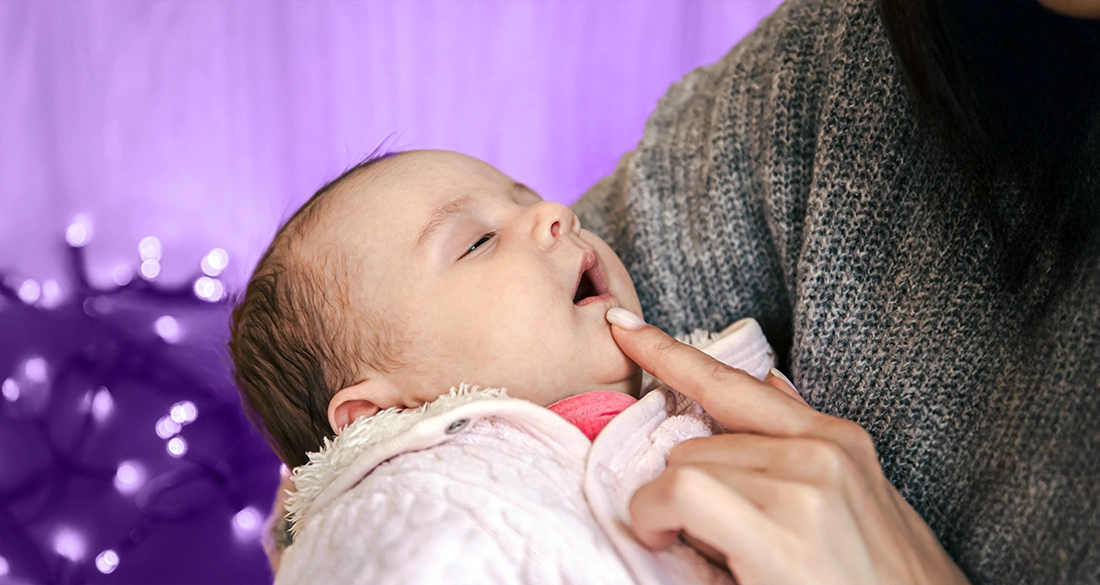Teething is a milestone that every parent anticipates with a mix of excitement and anxiety, especially when it comes to teething fever. Many moms and dads worry: Is fever while teething dangerous? Does teething cause fever? In this detailed guide, we’ll break down everything about teething and fever, including teething symptoms fever, teething temperatures, and safe ways to manage discomfort. Backed by insights from the American Academy of Pediatrics (AAP) and the World Health Organization (WHO), this article will help you distinguish myths from facts, recognize real symptoms, and provide proven relief methods—so you can support your baby through this phase with confidence and calm.
What Is Teething Fever and Does Teething Actually Cause It?
fever refers to a slight rise in body temperature that some babies experience as their teeth emerge. Typically, teething temperatures stay below 100.4°F (38°C) and are more like a low-grade warmth than a true fever. Contrary to popular belief, scientific studies—including a review in Pediatrics—show that teething does not cause fever above 100.4°F. What happens instead? The gum inflammation, excess drool, and mouth exploration can lead to minor irritation or coincidental viral infections (common between 6-24 months), mimicking fever while teething.
Is it dangerous? In most cases, no. Teething and fever (when mild) resolve within 1-3 days without complications. However, high or persistent teething temperatures (over 100.4°F) usually signal something else, like an ear infection, cold, or roseola. Always measure with a reliable digital thermometer and consult your pediatrician if in doubt—better safe than sorry.
Common Teething Symptoms (Including Fever)
Teething symptoms usually start weeks before a tooth appears and vary by baby. Here are the classic signs of teething symptoms fever and discomfort:
- Intense urge to bite or chew: Babies gnaw on toys, fingers, or even mom’s breast during feeding to relieve gum pressure.
- Excessive drooling: Itchy gums trigger more saliva than usual, often leading to chin rashes if not wiped gently.
- Swollen, inflamed gums: You’ll notice red, puffy gums that may split as the tooth pushes through; some babies bite objects, worsening irritation.
- Mild tummy upset or loose stools: Swallowed drool can cause minor digestive changes, though severe diarrhea isn’t from teething.
- Slight temperature rise and sleep troubles: This is where teething fever shows up—a low fever while teething with fussiness, especially at night.
These are normal and fade once the tooth erupts. Track patterns to spot if teething cause fever or another issue.
When to Worry About Fever During Teething
Mild teething temperatures are harmless, but call the doctor immediately if:
- Temperature exceeds 100.4°F (38°C).
- Fever while teething lasts over 48 hours.
- Accompanied by vomiting, severe diarrhea, rash, or lethargy.
- Baby refuses feeds or shows dehydration signs (fewer wet diapers).
Don’t assume everything is teething and fever—teething coincides with peak infection ages.
Safe Ways to Soothe Teething Pain and Reduce Fever
Focus on comfort for teething fever relief without over-medicating. Pediatrician-approved methods:
- Chilled teething rings: Pop a (non-liquid-filled) teether in the fridge (not freezer) for cool pressure that numbs gums and eases teething symptoms fever.
- Gentle gum massage: Use a clean finger or cool, damp washcloth to rub swollen areas—soothing and calming.
- Pain relievers if needed: Acetaminophen (Tylenol) or ibuprofen (Advil) are top choices for teething fever and aches. Dose strictly by weight/age; always ask your doctor first. Avoid aspirin.
- Herbal remedies (with caution): Used for centuries, these can help mildly:
- Chamomile: Promotes relaxation and soothes irritated gums—offer as diluted, cooled tea.
- Catnip: Calms fussiness and provides comfort.
- Clove: A natural topical numbing agent—mix a drop of clove oil with a carrier oil and apply sparingly.
Skip teething gels with benzocaine or lidocaine; the FDA warns of rare but serious risks like methemoglobinemia.
Extra Tips to Ease Teething and Prevent Fever Spikes
- Keep things clean: Wipe drool often to avoid rashes; sterilize toys.
- Breastfeed on demand: Comfort nursing boosts immunity and soothes.
- Create a calm routine: Extra cuddles, white noise, or dim lights for better sleep.
- Stay hydrated: Offer more fluids if starting solids.
- Avoid sugars: They can inflame gums further.
Timeline: When Does Teething End?
First tooth: 6-10 months. Full set of 20 baby teeth: By age 3. fever is often worse with canines and molars.
Bottom Line: Teething Fever Is Manageable and Rarely Serious
Teething fever is a normal (and temporary) part of growth—not a cause for panic. Mild teething temperatures and teething symptoms fever pass quickly with simple care like chilled teethers, massages, and doctor-guided meds. Remember: Teething does not cause high fever. Monitor closely, trust your instincts, and reach out to your pediatrician for peace of mind. Soon, you’ll be admiring that toothy grin—teething troubles forgotten!
also read

